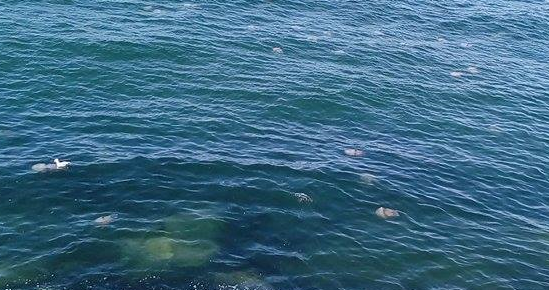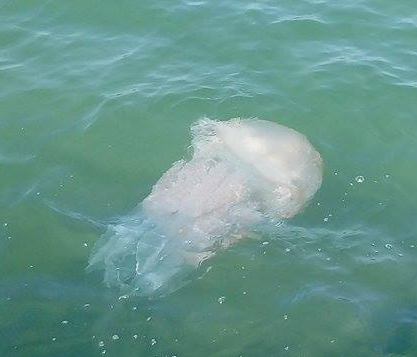Over the past few weeks hundreds of jellyfish have been seen floating around on the current in Cardigan Bay and washed up in vast numbers on the local beaches. These huge gelatinous masses have sparked the interest of locals and tourists alike. They are usually seen present in these numbers later in the season around July-August time however theories have been proposed that the milder winter and plankton blooms have allowed the jellyfish to thrive this early in the year.
Barrel jellyfish have a bell up to a diameter of 90cm and vary in colour from orange and pink through to white making them very visible from the shore and at sea. Structurally jellyfish are very simple, up to 90% of their composition is water and they do not have a circulatory system, blood, brain or heart. In the bell they have a very simple nerve net that controls their system along with organs called statocysts that help with balance. In order to eat they use their collection of stinging tentacles to paralyse prey and although they can swim by propulsion of water from their bell, they generally float with the currents. These jellyfish have a lifecycle of just 12 months and come to the bay at the end of this cycle.
It is believed that jellyfish are a sign of warmer oceans and that high numbers can indicate fluctuation in sea temperature from climate change. It will be interesting to see if the numbers of jellyfish continue to rise in the bay and if this phenomenon becomes the norm.
Written by Sophie Holden – Research Intern 2017.


























